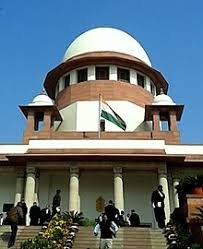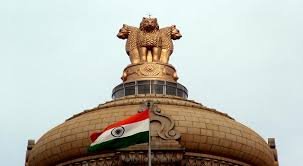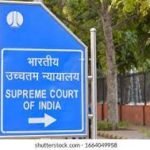This judgment by the Supreme Court of India details the acquittal of two accused, Putai and Dileep, in a gruesome case involving the rape and murder of a 12-year-old girl, due to a multitude of flaws in the prosecution’s evidence and investigation.
On September 4, 2012, Mst. S, a minor girl (aged about 12 years), went missing after going out to attend the call of nature.Her denuded dead body was found the next morning in Harikrishna Sharma’s field, while her personal articles like chappals, water canister, and underwear were found in Bhaktisharan’s field, cultivated by accused No.1-Putai.
An FIR was lodged on September 5, 2012, alleging rape and murder by unknown persons. Postmortem reports confirmed grave violence, sexual assault, and death due to asphyxia by strangulation.
The accused-appellants, Putai and Dileep, were arrested on September 7, 2012.
The trial Court convicted both accused under Sections 376(2)(g), 201, and 302 of the Indian Penal Code (IPC). Putai was sentenced to death for murder, while Dileep received rigorous life imprisonment for murder.
The High Court of Judicature at Allahabad confirmed Putai’s death penalty and dismissed the appeals of both accused. The present appeals challenge this High Court judgment.
Law Involved:
Sections 376(2)(g), 201, 302 of Indian Penal Code, 1860 (IPC): Offences for which the accused were convicted, relating to gang rape, causing disappearance of evidence, and murder.
Section 366 of Code of Criminal Procedure, 1973 (CrPC): Reference made by the trial court to the High Court for confirmation of the death sentence.
Section 313 CrPC: Recording of statements of the accused-appellants and confronting them with allegations.
Section 106 of the Indian Evidence Act, 1872: Pertaining to the burden of proof, which the State contended shifted to the accused-appellants to explain the presence of incriminating articles in Putai’s field.
Section 293 of CrPC: Relating to evidence of formal nature that can be given on affidavits; the Court noted DNA reports are substantive evidence and cannot be proved by affidavit of an unconnected officer.
Reasoning: The Supreme Court identified several crucial flaws and inconsistencies in the prosecution’s case, which was based purely on circumstantial evidence:
Inconsistent Witness Testimonies & Unnatural Conduct:
The initial complaint (FIR) was silent regarding any suspicious conduct of the accused-appellants or suspicion cast on anyone.
The “suspicious conduct” of accused No.1-Putai, such as washing his hands/face or changing clothes, was deemed natural and not incriminating given his occupation as a laborer/farmer and the admitted fact of his parents’ hospitalization. The mother’s (PW-2) testimony about him rushing and changing clothes was considered an exaggeration/improvement from her previous statement.
Doubtful Recovery of Comb and Dog Squad Theory:
Witnesses gave contradictory versions of the comb’s color (bluish-green, dirty light red, sky-blue, green), making its recovery doubtful.
The claim that witnesses could identify the comb as belonging to accused No.2-Dileep was found farfetched and unbelievable as it was an ordinary plastic comb.
The dog squad procedure was not documented and relied solely on oral evidence, making the entire process doubtful and the theory that the comb linked Dileep to the crime “unworthy of credence”.
Discrepancies in Recovery of Victim’s Articles:
While some articles were found in Putai’s field, the initial complaint mentioned only chappals, water canister, and bloodstains, omitting the underwear. The Court found the recovery of the underwear from Putai’s field to be a “planted recovery” by the Investigating Officer (PW-9).
The fields were open and accessible to all, making it difficult to exclusively link the articles or the crime to the accused.
Fatal Flaws in DNA Evidence:
The prosecution failed to prove the procedure, date, or time of drawing blood samples from the accused for DNA comparison, with no oral evidence or documents to fortify it.
There was a total lack of evidence regarding the chain of custody of blood and forensic samples; no carrier was examined, and no documentation (malkhana register, forwarding letter, FSL receipt) was exhibited.
Inconsistent medical evidence regarding the number of slides prepared for DNA examination by medical jurists (PW-7 and PW-8).
The first DNA report (Exhibit K-14) was inconclusive.
The supplementary DNA report (December 2, 2014) was inadmissible because it was produced during the appeal without being put to the accused under Section 313 CrPC, and the expert witness (PW-12) was not recalled to prove it. The Court also noted that the forensic samples were likely consumed during the first report, breaching their sanctity for a supplementary analysis. The two DNA reports were in stark contradiction, and the prosecution failed to reconcile them.
Investigative Lapses:
The Investigating Officer (PW-9) failed to forward crucial articles like the child victim’s frock and underwear to the FSL for scientific analysis, raising suspicion that their recovery was planted.
The accused-appellants’ house was not searched for incriminating evidence, despite allegations of suspicious conduct.
No one from the neighboring fields, where the incident occurred, was examined, casting doubt on the bona fides of the investigation.
The Court explicitly called the case a “classic example of lackluster and shabby investigation and so also laconic trial procedure”.
Holding:
The Supreme Court found that the prosecution failed to lead any credible evidence to incriminate the accused-appellants or to prove their guilt beyond all manner of doubt.
The appeals were allowed, and the impugned judgments of the High Court and the trial Court were quashed and set aside.
Accused-appellants Putai and Dileep were acquitted of all charges and ordered to be released from prison forthwith, if not wanted in any other case.
Putai vs State of Uttar Pradesh
Supreme Court: 2042 INSC 1042 (DoJ 26-08-2025)








